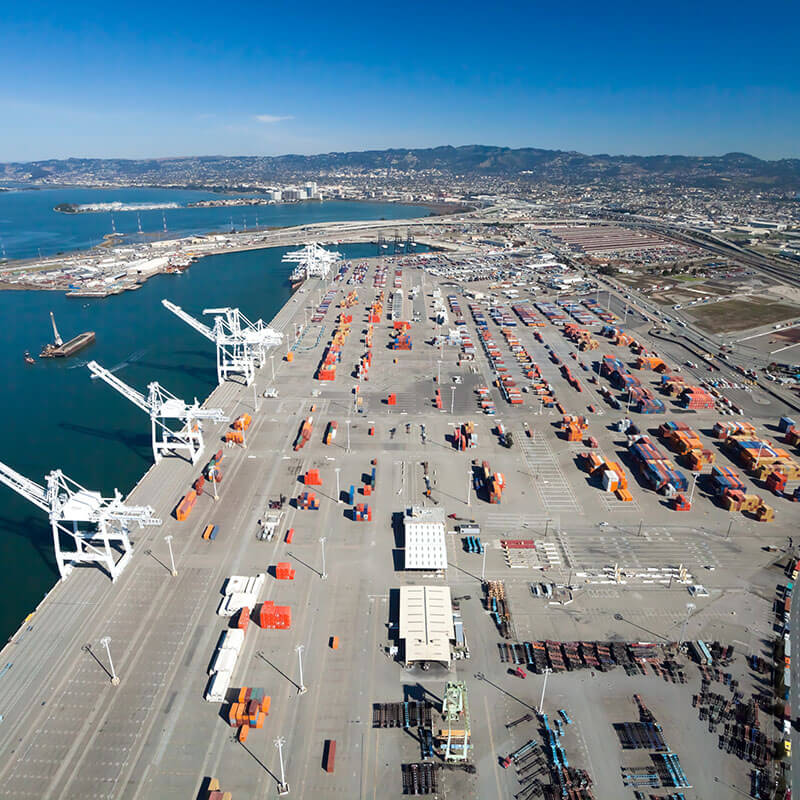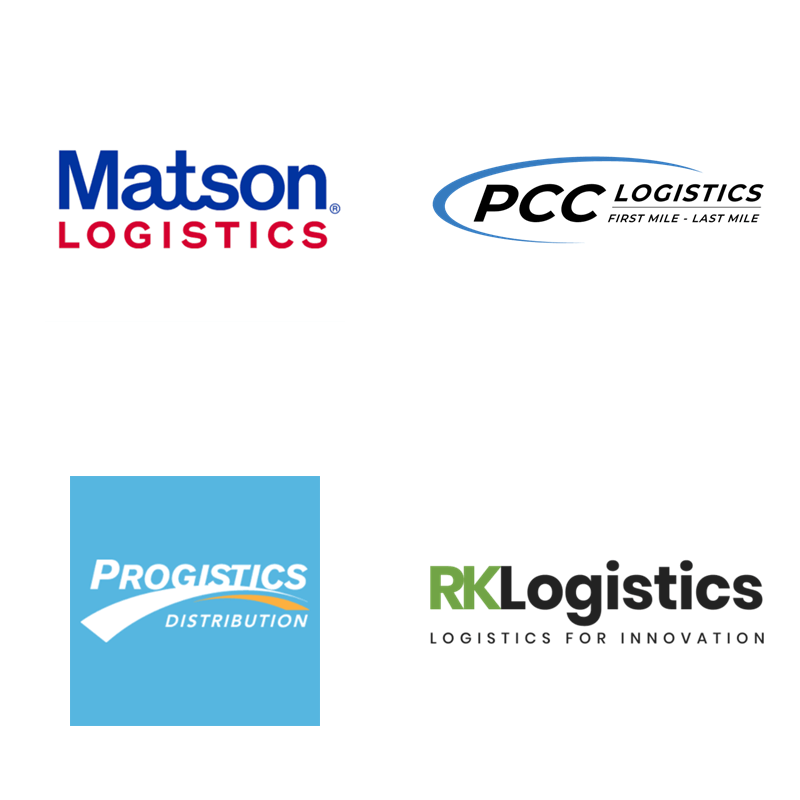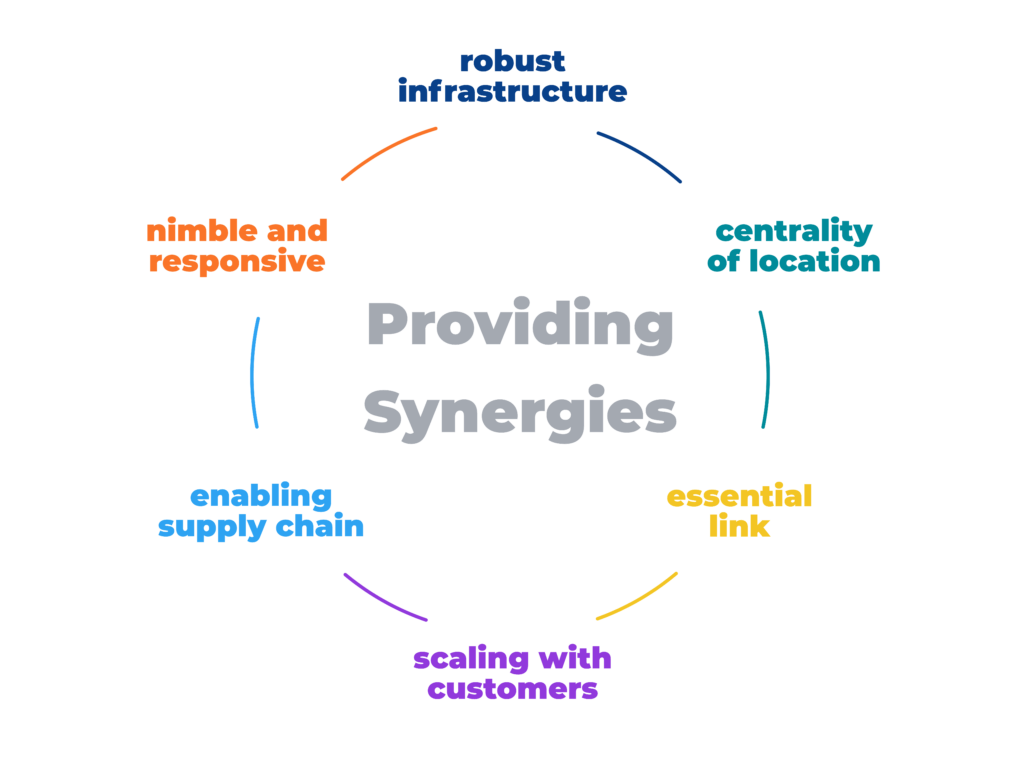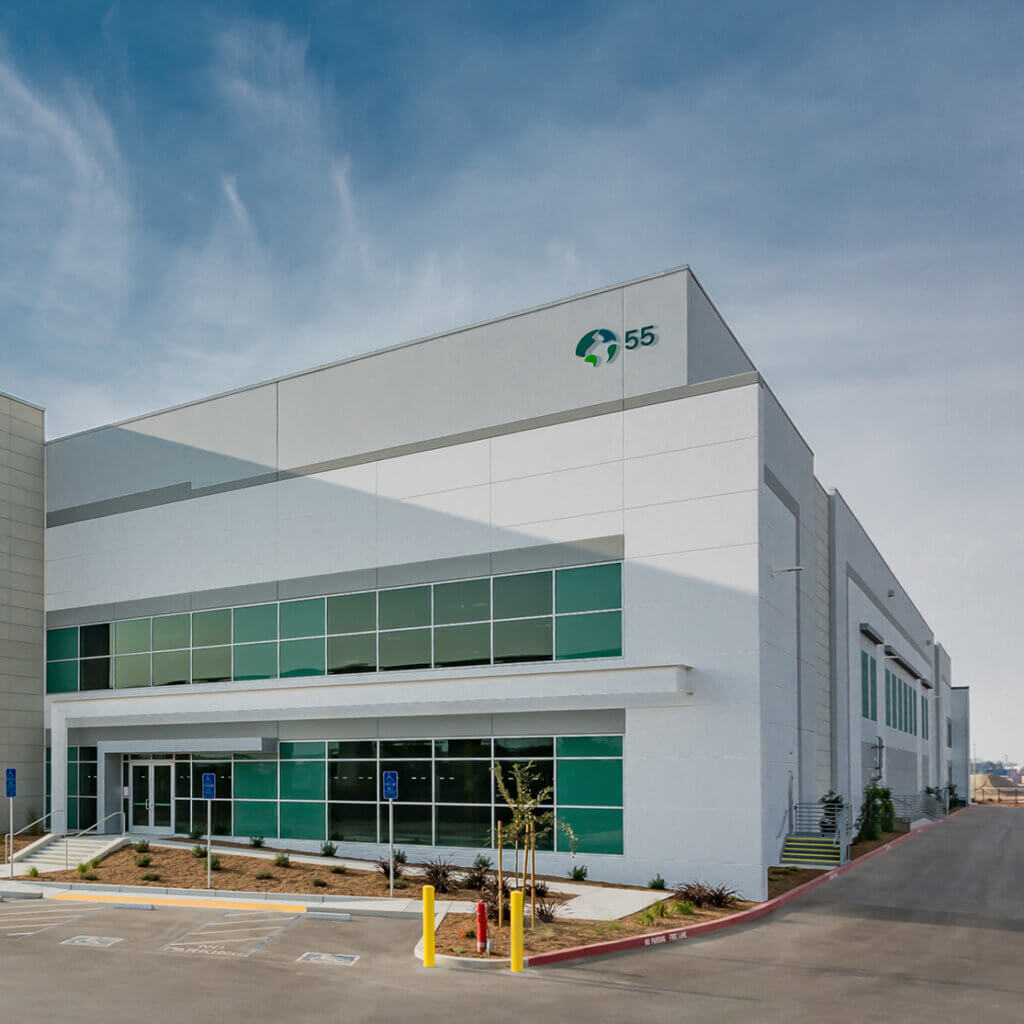Transportation
The Transportation, Distribution, and Logistics industry (commonly referred to as "Goods Movement" or "TDL") enables the supply chains necessary for the regional and global distribution of goods. The East Bay plays a crucial role in the Northern California megaregion's goods movement and serves as a gateway to the world. The region's robust transportation infrastructure and large supply of industrial land provide the backbone for these important activities.

Why the East Bay?
Central Location
- Heart of the Northern California Megaregion
- Extensive physical infrastructure (air, highways, rail, utilities)
- 2 Global Ports (Oakland and Richmond) with direct access to global supply chains and international markets
- Preservation and investment in industrial lands
Proximity to Customers
- Growing import/export activities
- Close proximity to San Francisco, Silicon Valley, Sacramento, and Central Valley
- Extensive customer base and supplier network
- Access to emerging markets locally and globally
INDUSTRY SUMMARY
Description
The goods movement industry is the backbone of any regional economy and the East Bay serves as the transportation hub for the Northern California megaregion. The distribution of raw and finished products move through complex systems, often relying on multiple modes of transportation (air, rail, truck, water) between producers, distributors, and ports. The growth of this industry strongly corresponds with the rise of international trade, e-commerce and last-mile distribution.
The transportation industry is composed of companies that operate fleet and facilities that support industrial activities in the East Bay and beyond. There are approximately 1,700 East Bay companies providing a variety of supply chain solutions (air, water, and freight) as well as warehousing and storage facilities for manufacturers and e-commerce businesses.
Transportation companies are found across the East Bay to serve the region’s seaports and airports as well as range of manufacturing and e-commerce retailers throughout the region. Goods movement activities concentrate along important highway corridors, such as I-580, I-680, I-880, I-80 that help connect East Bay to other regions.
1,700
Goods Movement Companies
Key Players
Transportation companies in the East Bay range from small “for-hire” independent operators to large, multi-faceted, multinational companies that provide a range of logistics, transport, and warehousing solutions.
A majority of transportation companies employ fewer than 10 employees and are independently operated. Larger supply chain operators include Progistics Distribution, RK Logistics Group, Pacific Coast Container, and Matson Global.
The East Bay’s extensive transportation infrastructure and industrial supply provide importantaccess to many businesses for both inbound (from suppliers) and outbound (to consumers).
Transportation is also a vital connection for the East Bay manufacturers with value chains that go beyond the region. This makes the East Bay transportation industry an active enabler of good movements from and into the State of California. According to the US Bureau of Transportation, the top products shipped from California are electronics, motorized vehicles, and miscellaneous manufactured products.
However, even with the wealth of industries servicing the East Bay and California and the higher than national net income, the cost of doing business has been steadily increasing, forcing logistics companies to migrate to places that offer better economics in terms of space and labor.
“The resources that we need are also the challenges. We need labor and space.”

Number of Jobs
The goods movement industry employ over 45,000 workers in the East Bay. As mentioned, the transportation sector is crucial in all aspects of the regional economy. According to an analysis of 9 NAICS codes, the “TDL” industry experienced a remarkable 83% job growth in the last ten years.
NAICS codes used in this analysis: 4811, 4841, 4842, 4883, 4885, 4889, 4921, 4922, 4931
~490
Average number of monthly job postings
Trends and Driving Force
East Bay transportation linkages will continue enabling companies to manage value-added niche manufacturing by combining inputs and maintaining just-in-time production systems.
The East Bay transportation industry is driven by the overall economy and supply chain needs of businesses. For example, the expansion of the EV sector and the proliferation of lithium battery manufacturers in the East Bay force logistics companies to retrofit older warehousing facilities to meet new storage requirements and transportation needs.
Located in the heart of the Northern California megaregion, the East Bay’s TDL companies are serving Silicon Valley’s advanced manufacturing companies as well as agricultural producers in the San Joaquin Valley and Sacramento Delta. The strategic location of the East Bay enables direct access to manufacturers and producers, supply chain operators, and consumers.

Challenges and Opportunities
In Spring 2023, East Bay EDA convened focus groups and interviews with industry leaders who shared why they’ve chosen to locate and invest in the East Bay, as well the challenges and opportunities facing the industry.
Challenges
Transportation companies are still recovering from pandemic-related supply chain disruptions, as well experiencing more inbound, less outbound traffic due to decrease production rates in the region. Businesses also cited real estate planning challenges, workforce shortages, and overall increased cost of doing business in the East Bay, as summarized below.
Production uncertainty of their customers translates into uncertainty of future inventory/real estate planning for logistics companies. As part of the recovery from the disrupted supply chains caused by the pandemic, logistics companies are forced to overcommit by investing in more space and resources while still facing uncertainties.
“We are at 130% capacity, but [are] uncertain about the future.”
There is a certain disconnect between resource allocation for transportation and storage by the logistics industry and the expectations by its manufacturing customers. Manufacturers mitigate their risks by lowering input volumes, changing frequencies of delivery, and opting out of long-term warehousing leases. That does not match the logistics industry’s standard lease terms dictated by the property market that usually require a 3 to 5-year commitment to space.
“So, it really is balancing the commitment of our costs and our space and our resources and balancing that with the expectations of our customers.”
The issue of space is tightly connected to difficult decisions between rent vs. new build. In the East Bay especially, the logistics industry is historically overburdened by aging infrastructure. It is not uncommon to see companies invest in new construction because the cost of new build is on par with the investment that would be required to retrofit the older inventory.
A similar problem arises with other infrastructure associated with transportation in the East Bay. For example, maintenance of roads and grade separation between rail and roads will improve capacity, velocity, and safety; however, the cost of improvements is high and not shared by all participants of the ecosystem.
Labor has become a big challenge for East Bay logistics companies due to the rising costs and competition for labor with the gig economy and Silicon Valley. The likes of Google, Amazon, and Tesla compete for the same talent with deeper pockets. The likes of Uber and Lyft offer more flexibility, thus, contributing to the labor cost acceleration for other industries such as transportation and logistics. Both transportation companies and the manufacturing customers they serve must mitigate this type of acceleration of cost by finding new ways of making warehousing and even manufacturing work.
The source of labor for basic jobs in logistics, such as material handlers for example, expanded to include places like Tracy in the San Joaquin Valley and the Central Valley. East Bay companies now compete with businesses in these areas to attract workers to the East Bay. In addition, many of the industry’s workers come from immigrant families for whom warehousing jobs are an entry level position providing upward mobility.
Many companies would agree that the location in the East Bay provides convenience to access resources and serve local customers. However, the high cost of operating in the area, especially the increasing labor and real estate costs, pose great challenges to businesses.
In addition, there is little clarity on what exactly California’s Assembly Bill 5 (AB5), which requires companies that hire independent contractors to reclassify them as employees, does to the trucking industry and how this change affects the cost of trucking for the logistics industry. So far, the logistics companies feel the ripple effect from the issues created by AB5 and are gearing up to bear the costs associated with state and regional mandates for zero-emission trucks.
“Challenges of our customers are our challenges.”
Opportunities
Despite the myriad of challenges, there are opportunities that cannot be overlooked:
Beyond the strategic locational advantages of the East Bay and proximity to major distribution hubs (ports and airports), transportation/logistics companies benefit from the tremendous innovation and growth of key industries. This allows transportation/logistics companies to be around startups and innovation in the region and support the ecosystem by providing essential links for supply chain relations enabling their customers’ just-in-time production systems.
Not only does transportation play the major role in the manufacturing ecosystem of the East Bay, but it is also one sector that truly needs to work in sync with multiple participants starting from suppliers to end users to ensure success of the entire system. The logistics industry is customer dependent and sensitive to changes affecting the entire value chain. To be efficient for logistics is to be nimble and responsive. Growing manufacturing customers, especially East Bay’s growing industries, allows logistics companies to scale up as their customers grow. Overall, integration of logistics processes with customers will help enhance synergies of the entire ecosystem.

Recommendations & Future Opportunities
When asked what industry most needed from regional and local partners, stakeholders shared their top recommendations.
Customer Education: The transportation industry would benefit from a tool that would better connect the industry with local and regional manufacturers. One such benefit is educating the customers on labor structures and cost structures for transportation, distribution, and logistics companies.
Worker Programs and Advocacy: The industry would benefit from better government support at the city, regional, and federal level for providing training programs for logistics workers, connecting residents to employment opportunities, and advocating for guest worker programs.
Business Services: Transportation companies must quickly respond to changes not only in their own industry but also changes that happen in their customers’ markets. Specific business services cited included:
- Timely access to information on new processes and requirements such as lithium battery regulations and certification for handling
- Incentives and resources to meet California’s mandate for electrifying trucks by 2035
- Zoning and regulatory support for logistics and warehouses, as well as managing land use incompatibilities and conflicts
Congestion Relief and Road Maintenance: Congestion and long idling times on highways and local roadways negatively impact the industry’s performance, which increases freight costs and impact the regional economy. Coordinated interregional strategies are needed to manage conflicts and intermodal bottlenecks. Stakeholders also shared that the maintenance of roads and grade separation between rail and roads will improve capacity, velocity, and safety.





